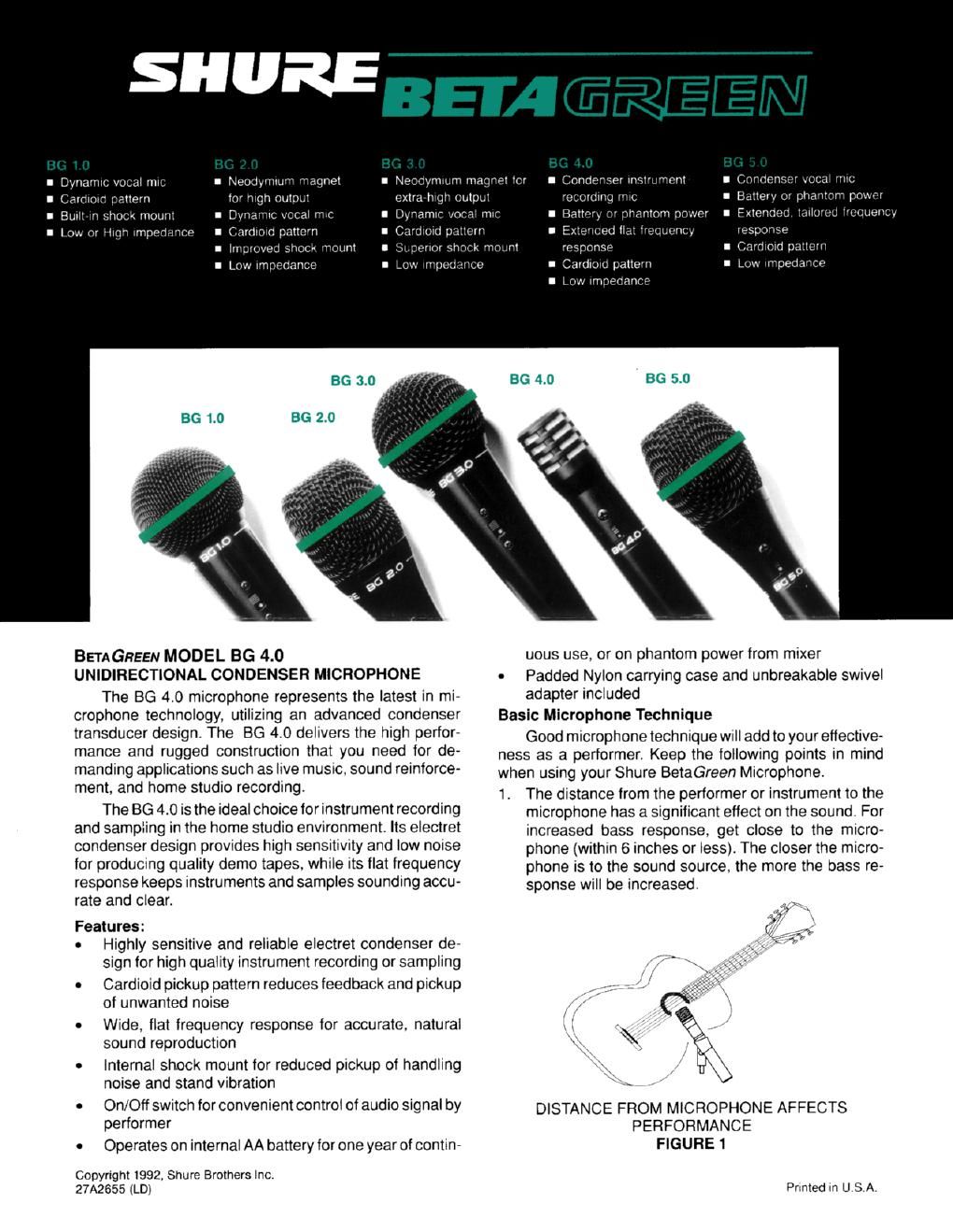Shure beta green bg 1 2 3 4 5 user guide
This is the 4 pages manual for shure beta green bg 1 2 3 4 5 user guide.
Read or download the pdf for free. If you want to contribute, please upload pdfs to audioservicemanuals.wetransfer.com.
Page: 1 / 4
